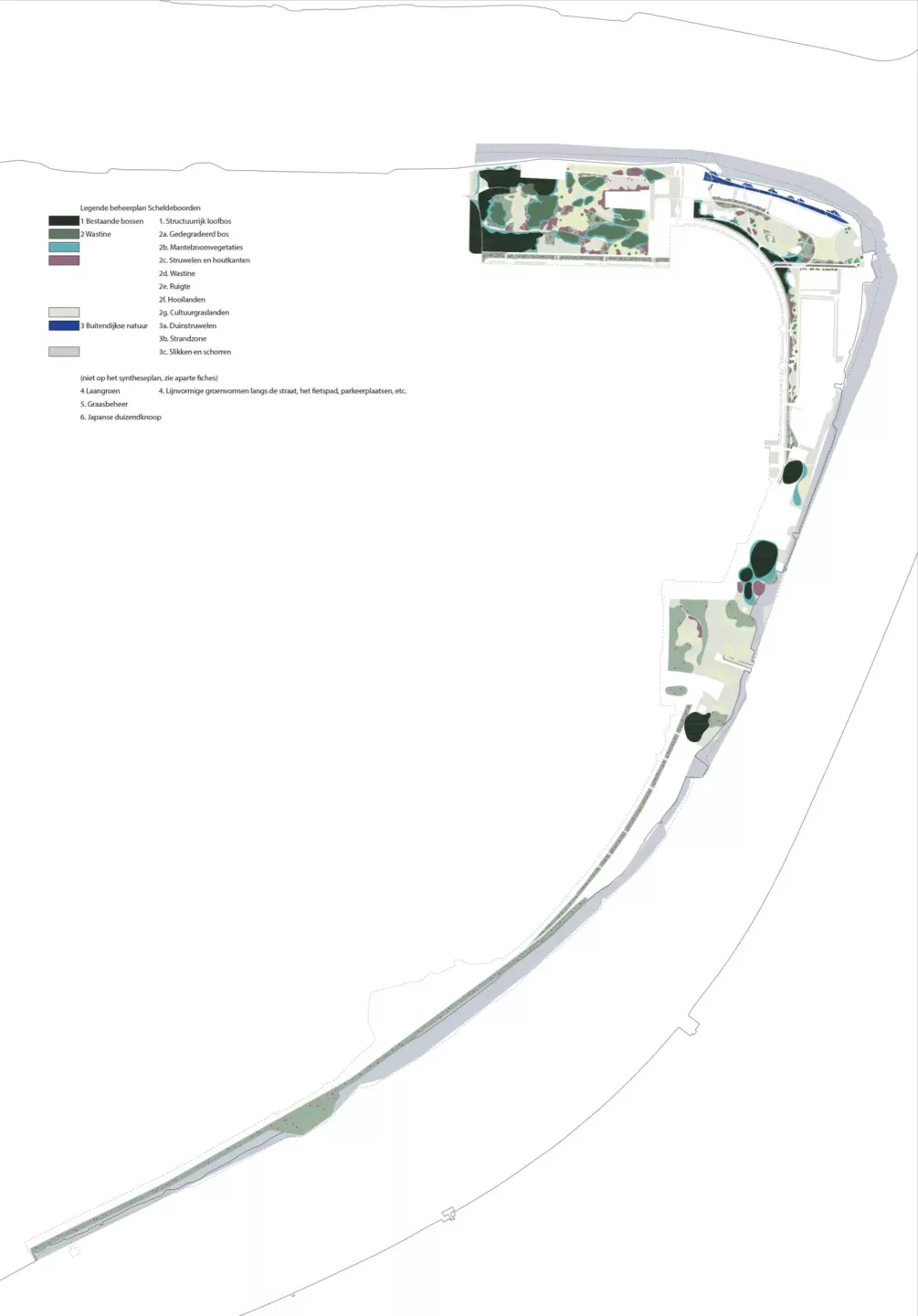
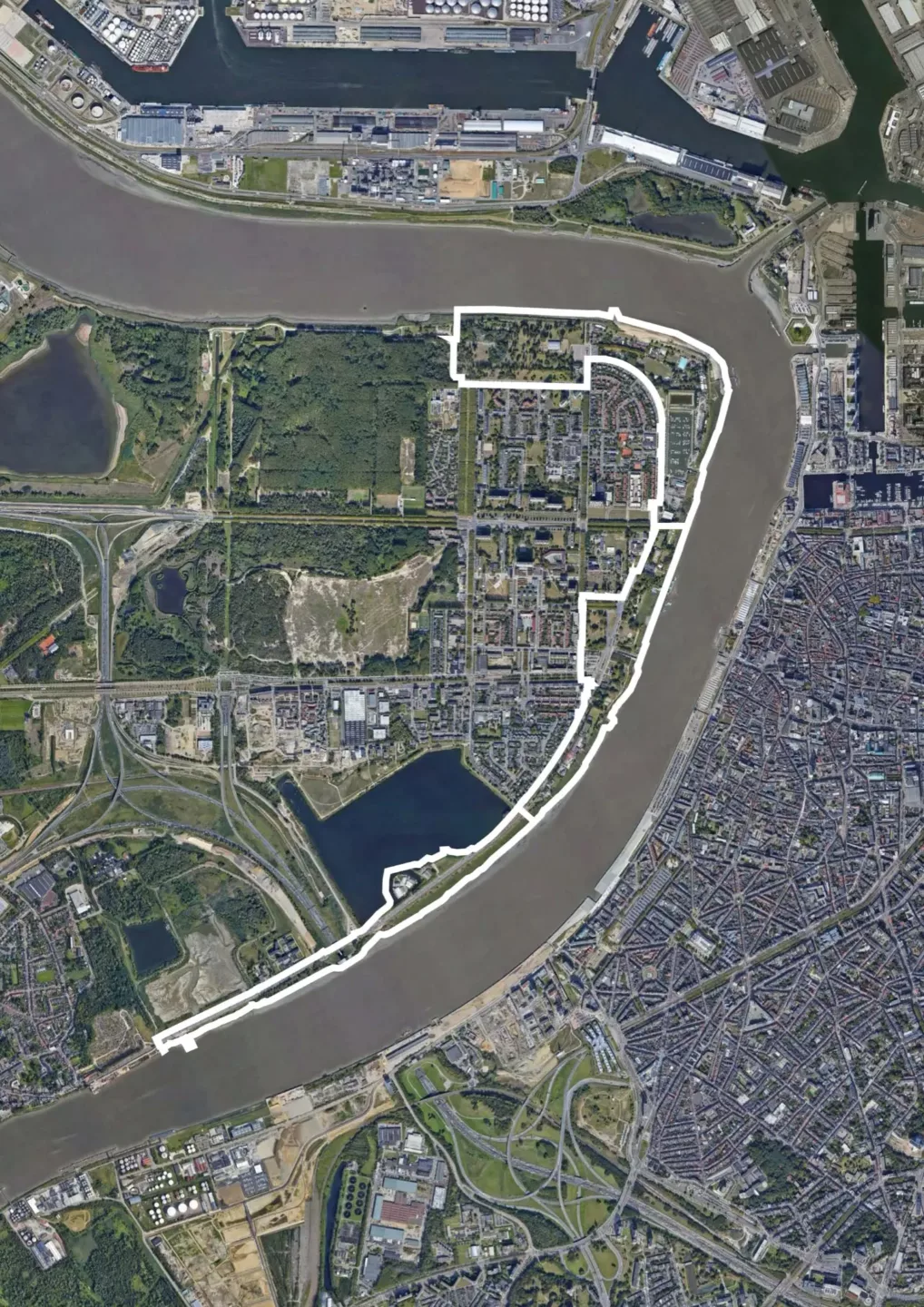
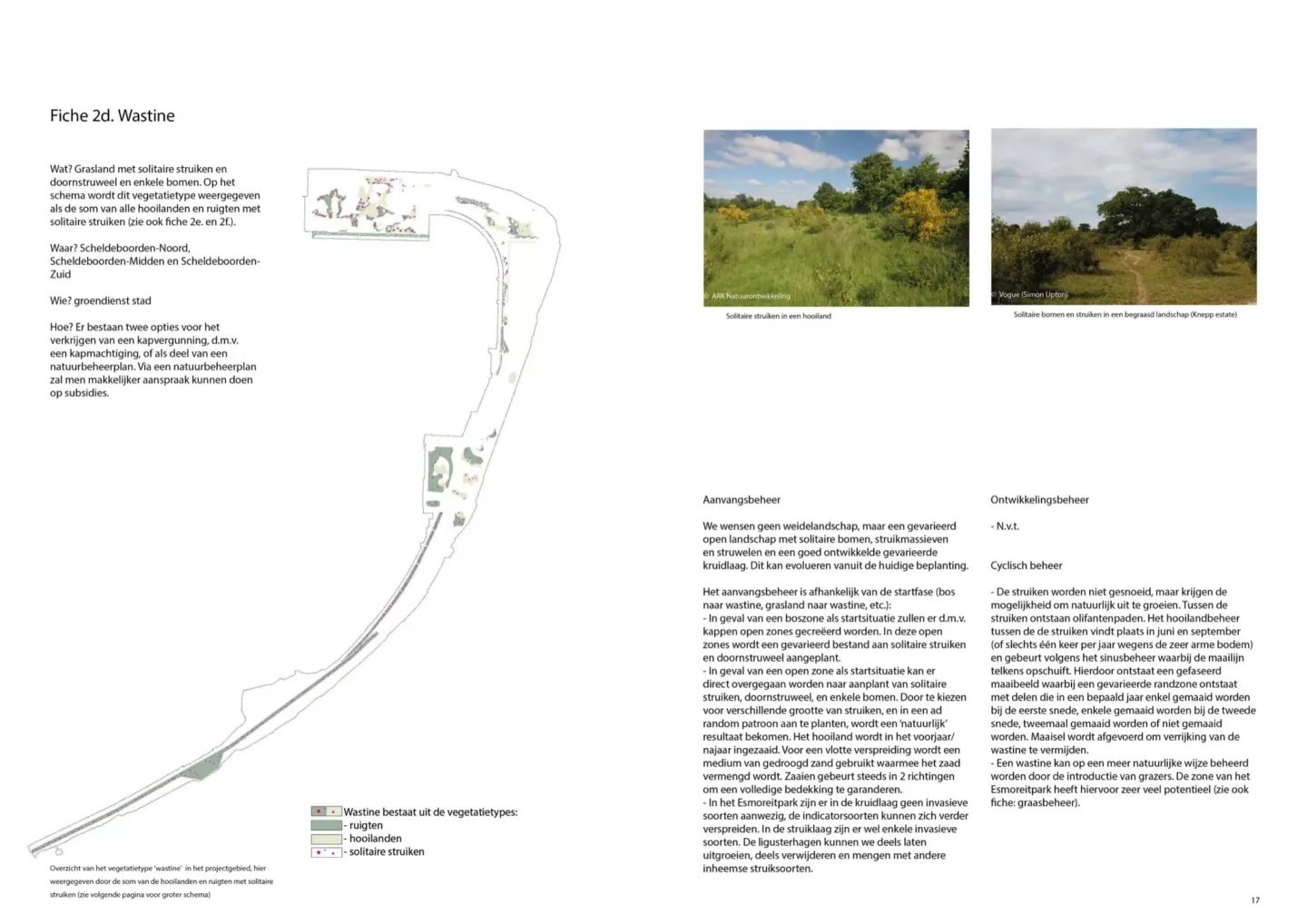

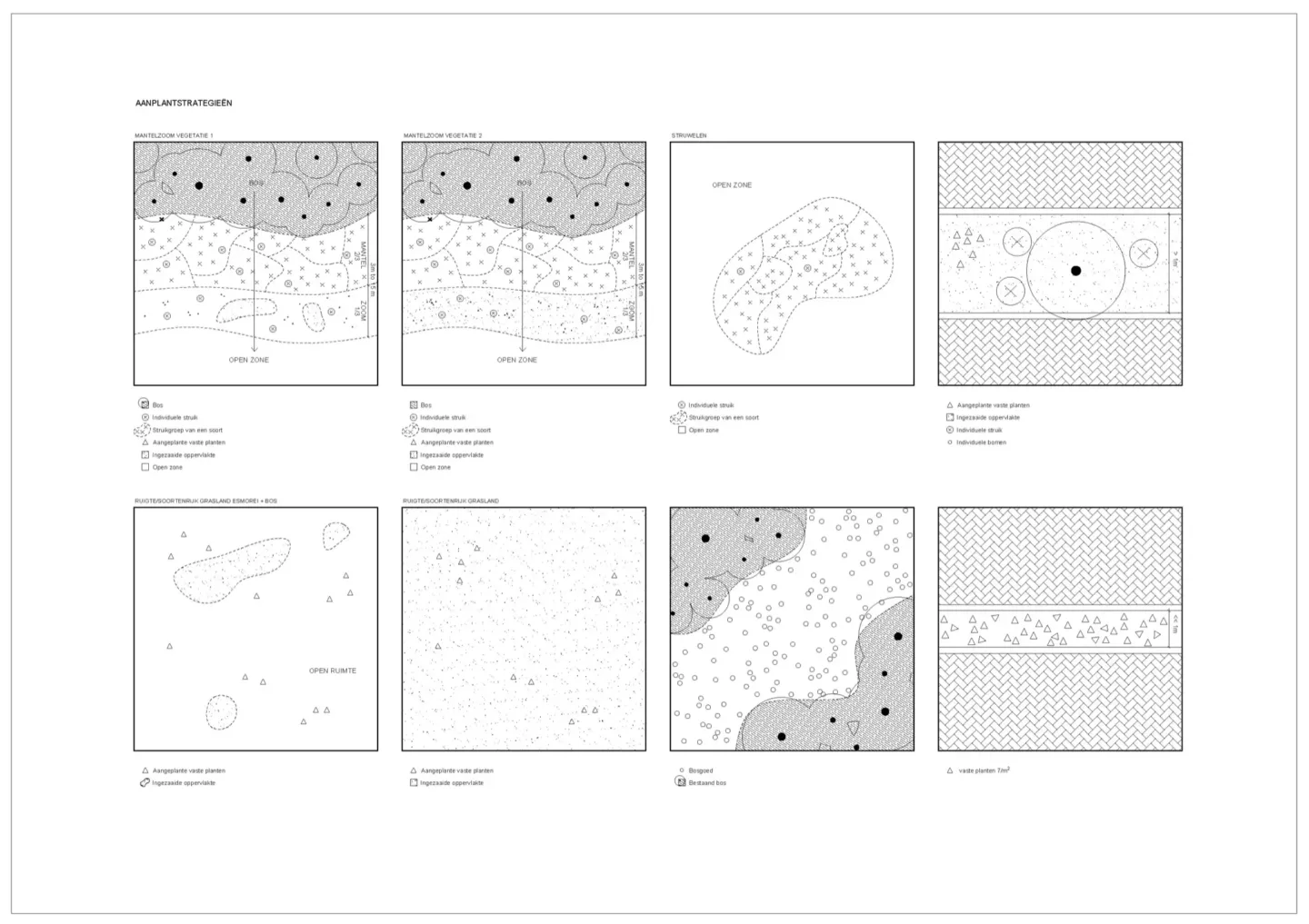
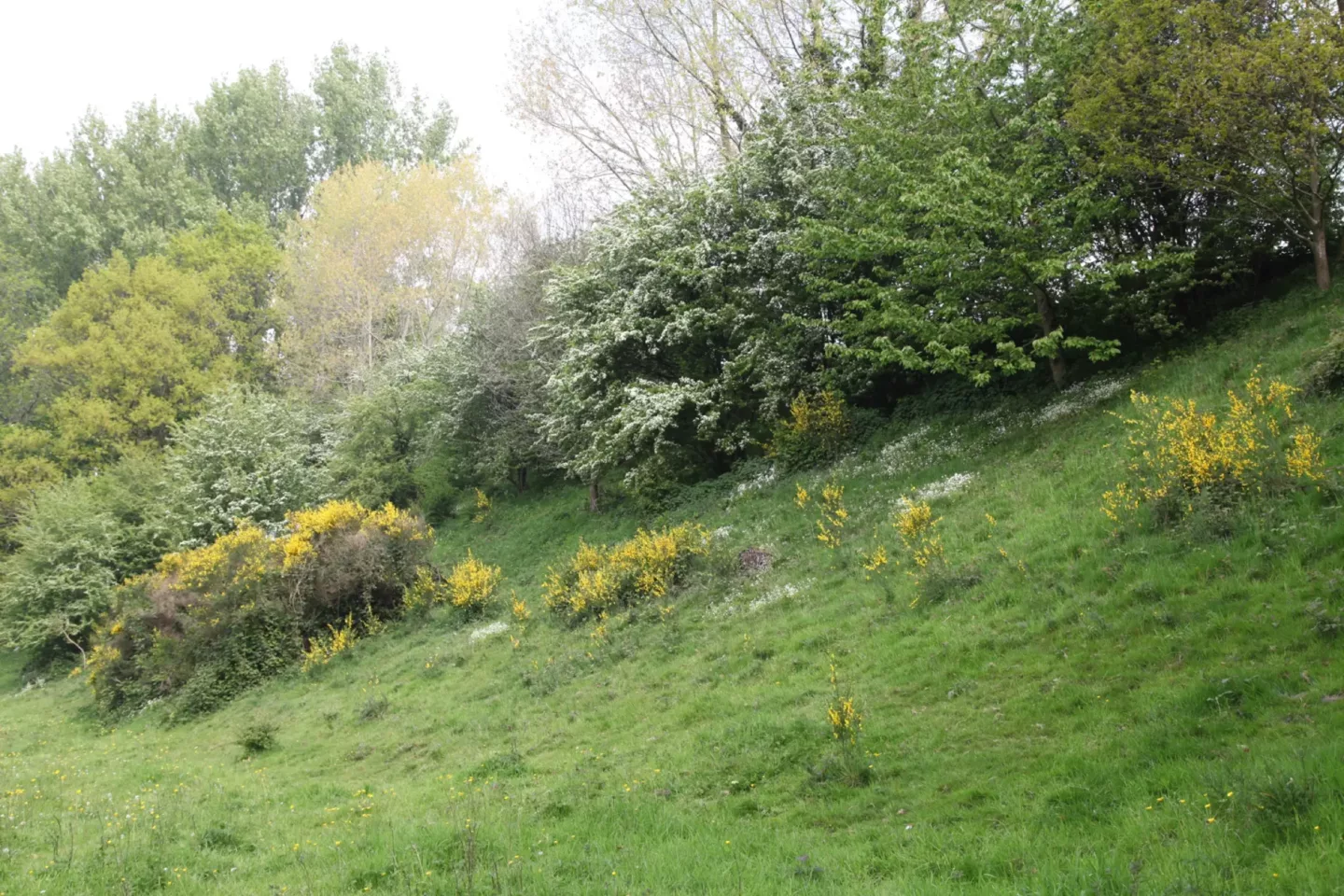
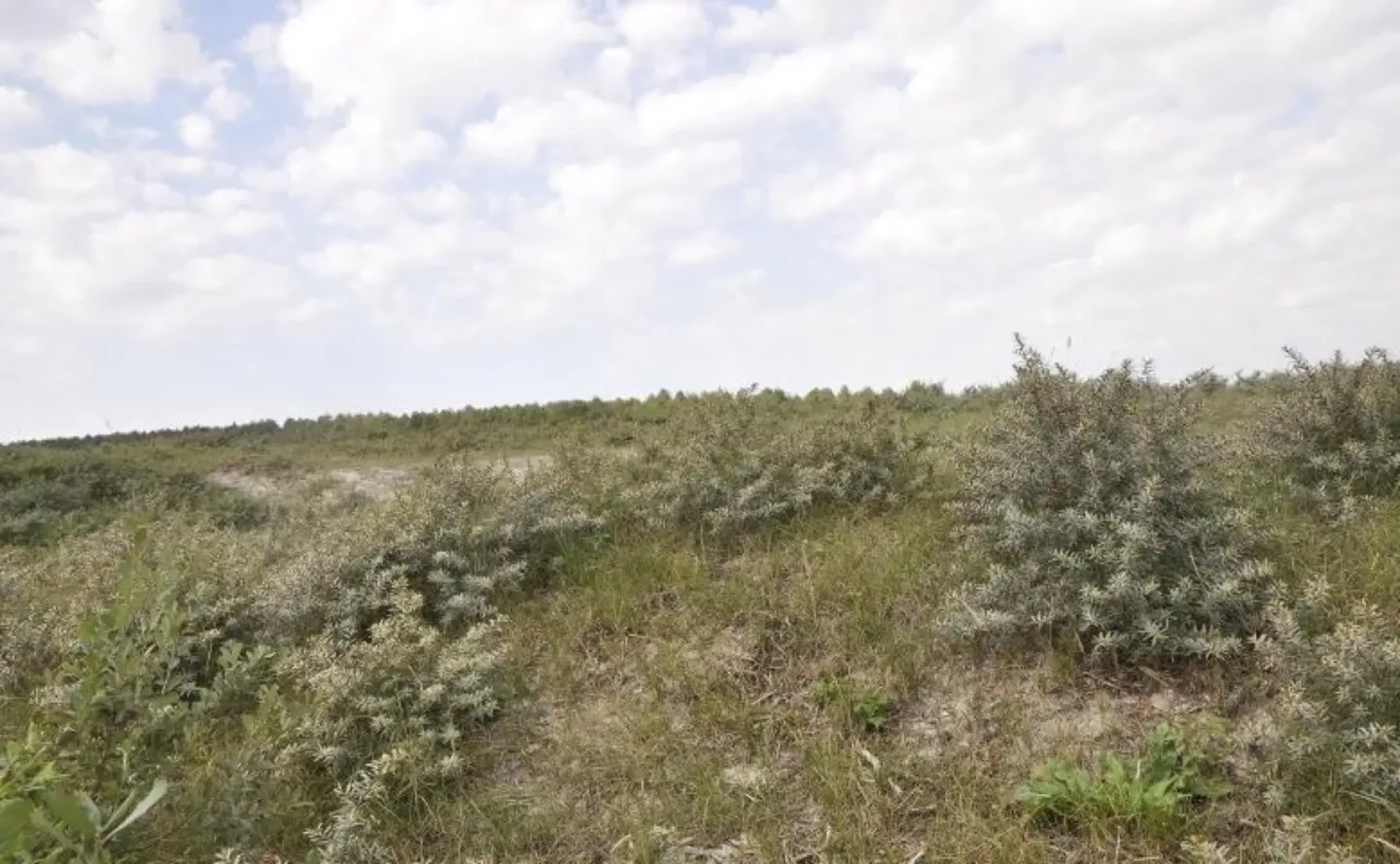
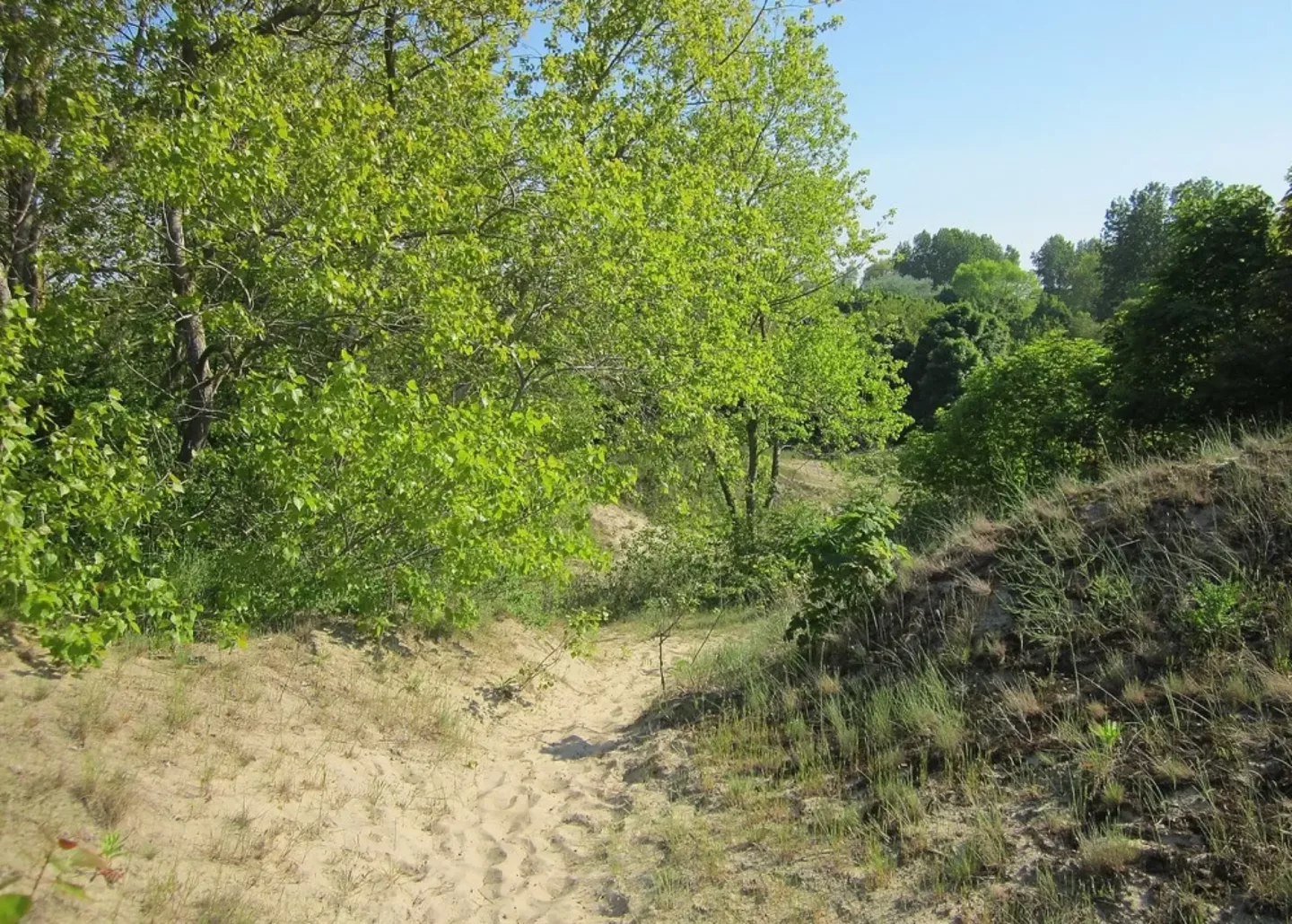
Landschapspark Scheldeboorden
The riverbanks of the river Scheldt are being transformed into a more legible, engaging, and biodiverse landscape park. Several existing green zones are being redesigned with full awareness of today’s climate challenges, the biodiversity crisis, and the urgent need to upgrade the overall quality of public space.
Circulation routes and zoning have been strategically guided by the experience of greenery, opportunities for recreation, and ecological development. The Esmoreit forest is positioned as a biodiversity hotspot, with plant selection tailored to the site’s specific calcareous sandy soil. The planting design and management strategy promote a more naturalistic development, with a strong emphasis on ecological gradients, microclimates, and spontaneous processes. The resulting mosaic landscape emerges not from fixed planting schemes, but through adaptive management that allows vegetation structures to evolve over time.
The adjacent Esmoreit Park and nearby Sint-Anna strand are more oriented towards human activity. These spaces form a clear gradient—from dense thickets, to open lawns with solitary trees, to an expansive dune-like landscape atop the elevated Scheldt dikes. Species selection and design interventions support and clarify this ecological and spatial transition.
Vegetation Strategy
Management intensity is tailored to each segment, ranging from naturalistic development to more structured park maintenance. In the Esmoreit Forest, management focuses on guiding existing and newly introduced vegetation toward the desired volumes and layering. While the Esmoreit Park and its adjoining green areas also aim for layered and biodiverse plant structures, the design vision here allows for less ecological spontaneity, with clearer aesthetic and functional goals.
In contrast, the dune landscape operates with a high degree of ecological dynamism. Here, management prioritizes openness, the maintenance and enrichment of characteristic dune vegetation, and the stabilization of dune formations—ensuring that natural processes can unfold while preserving the integrity of the landscape.